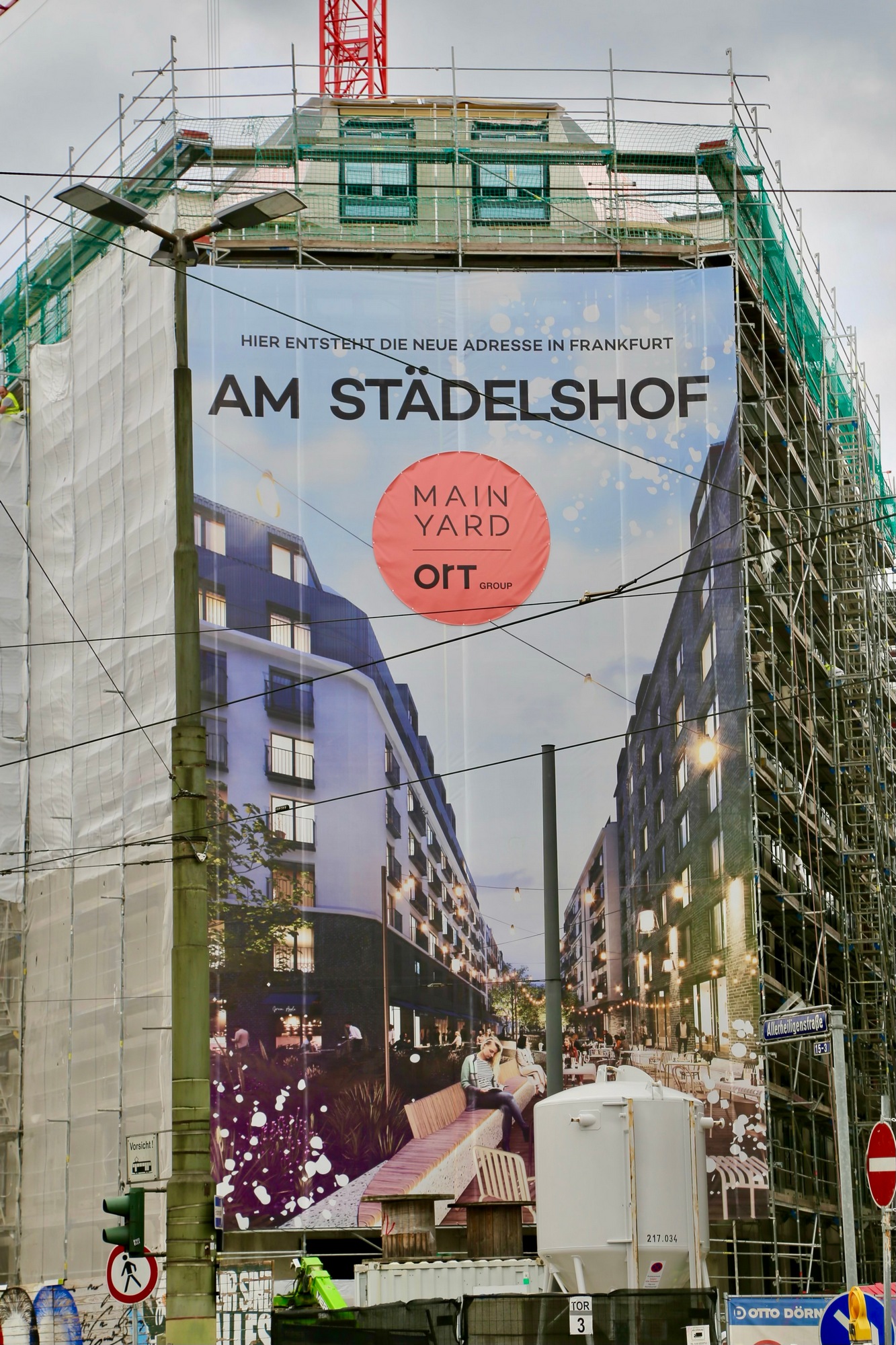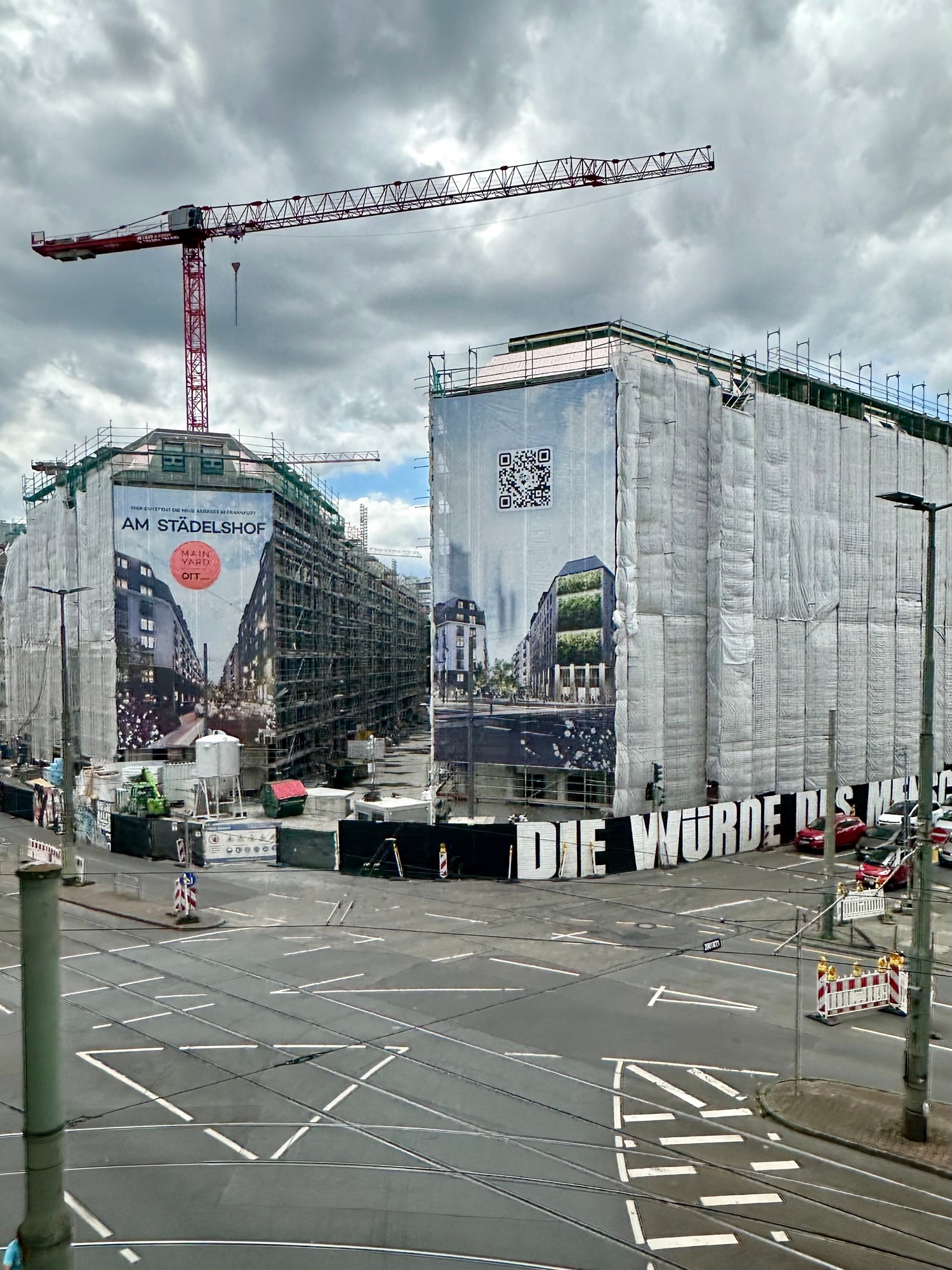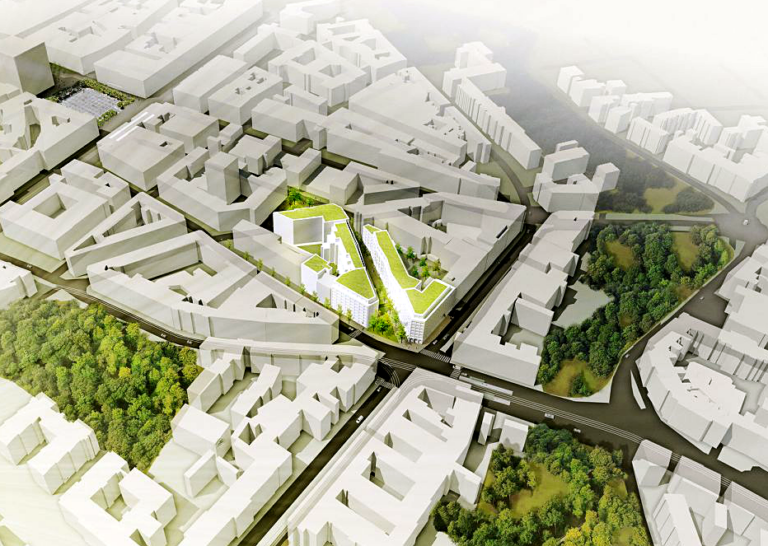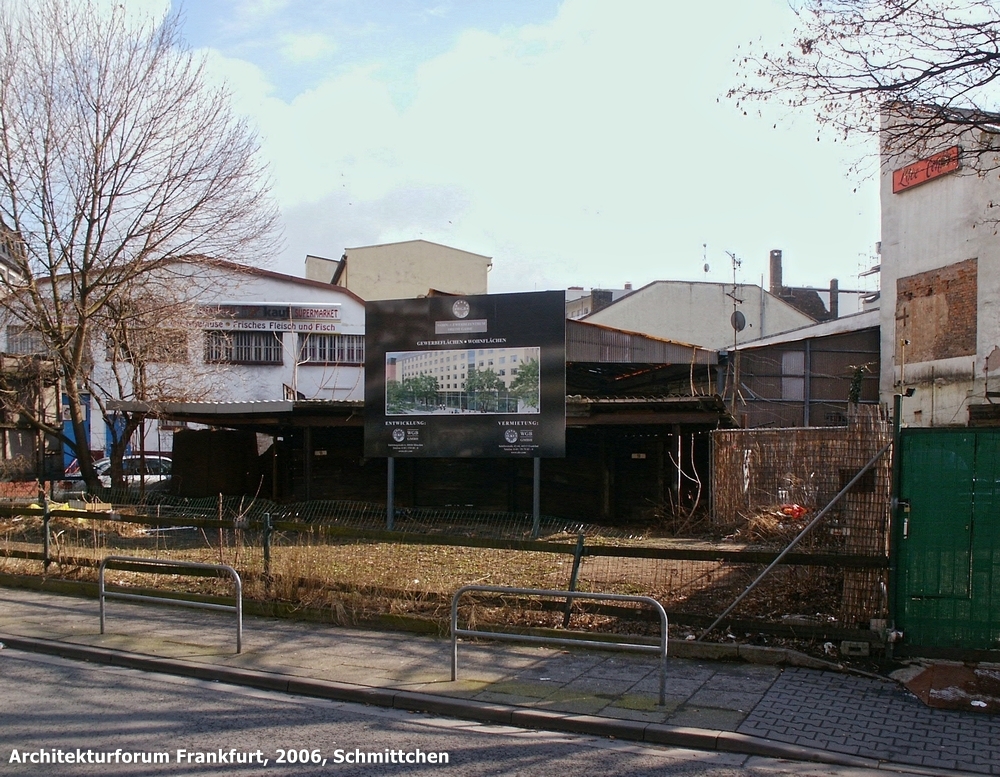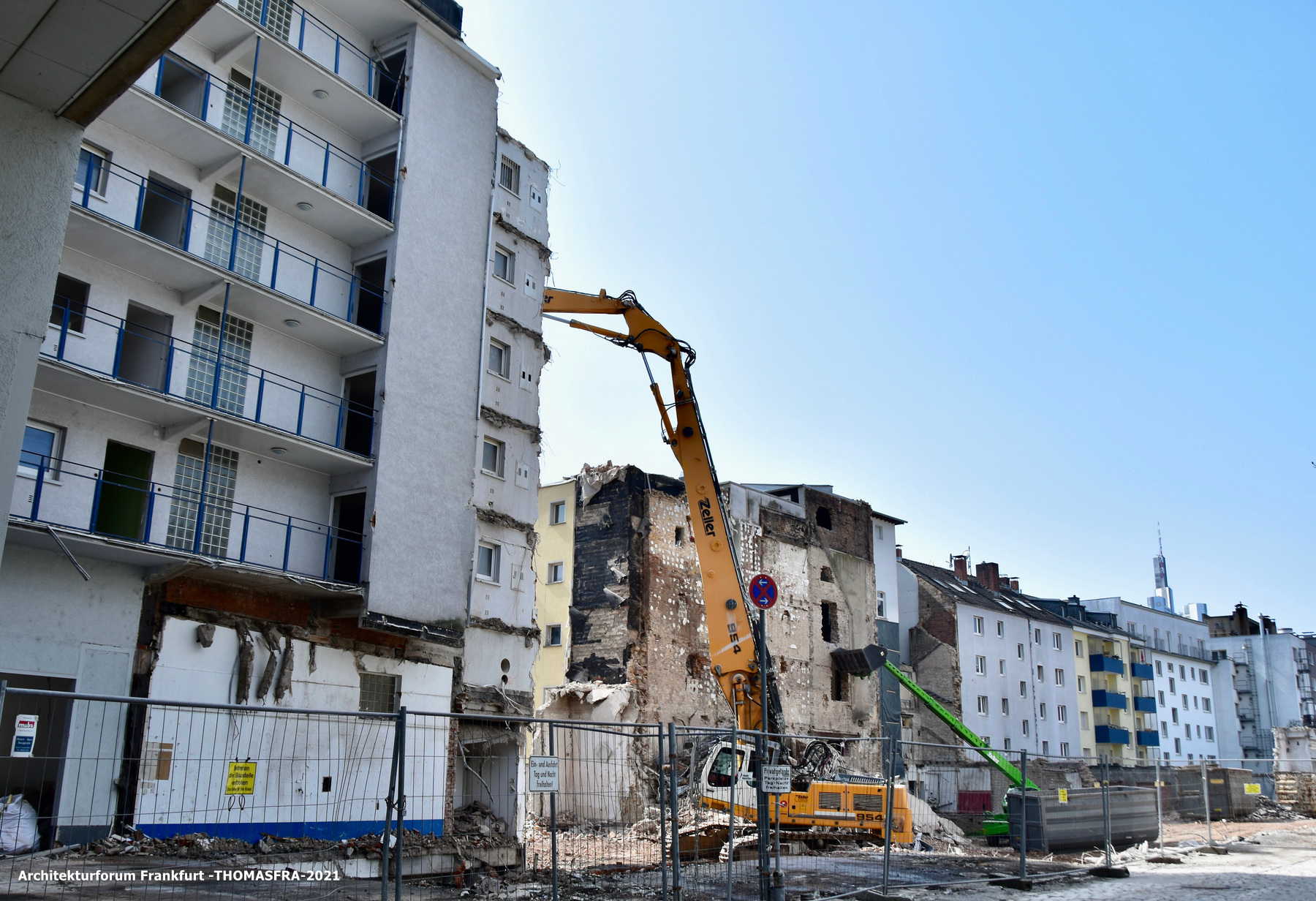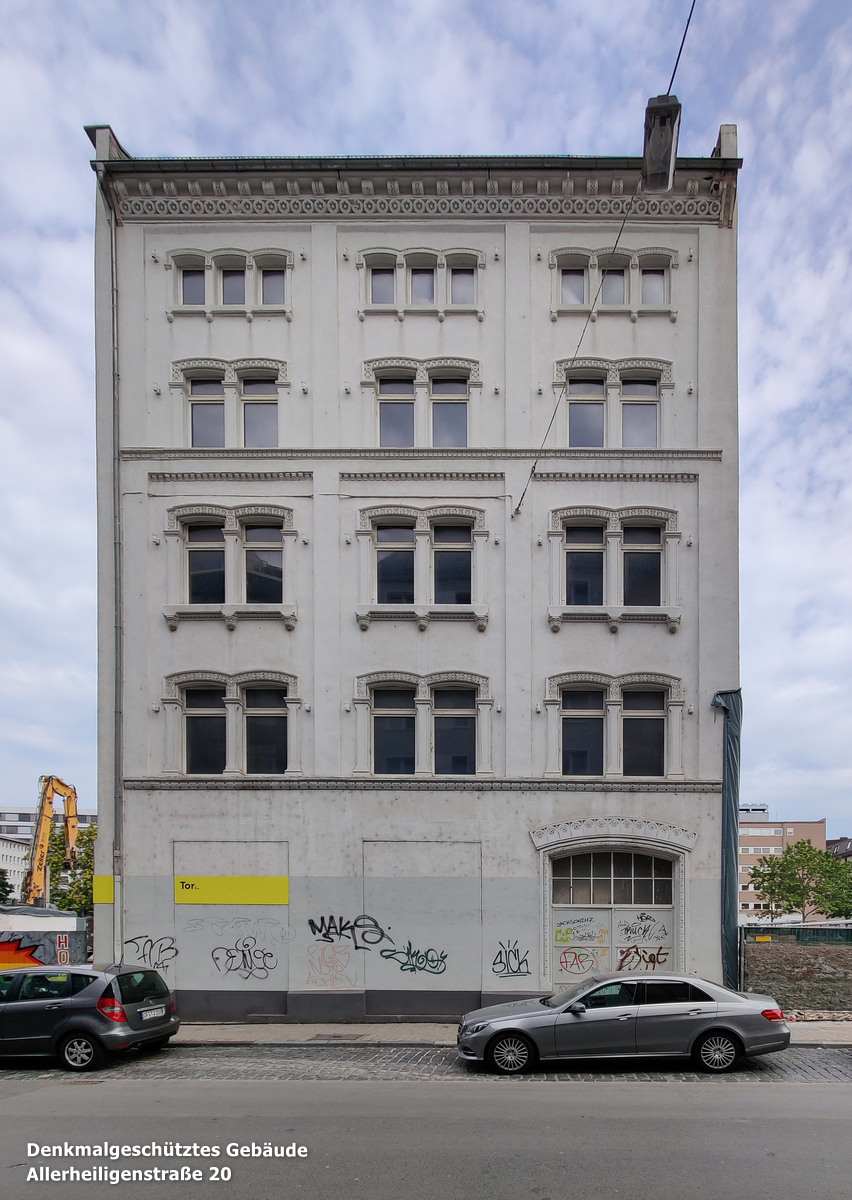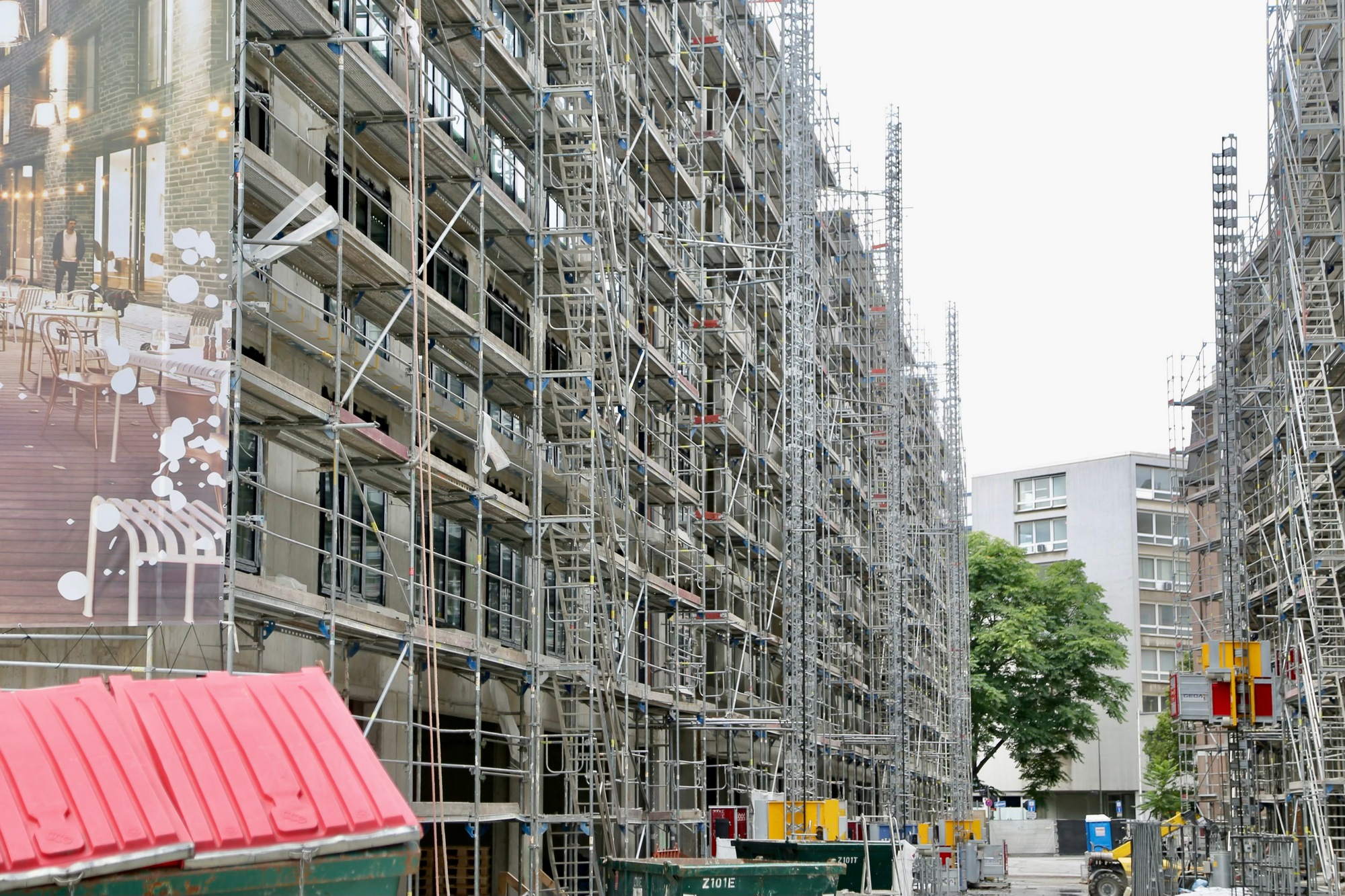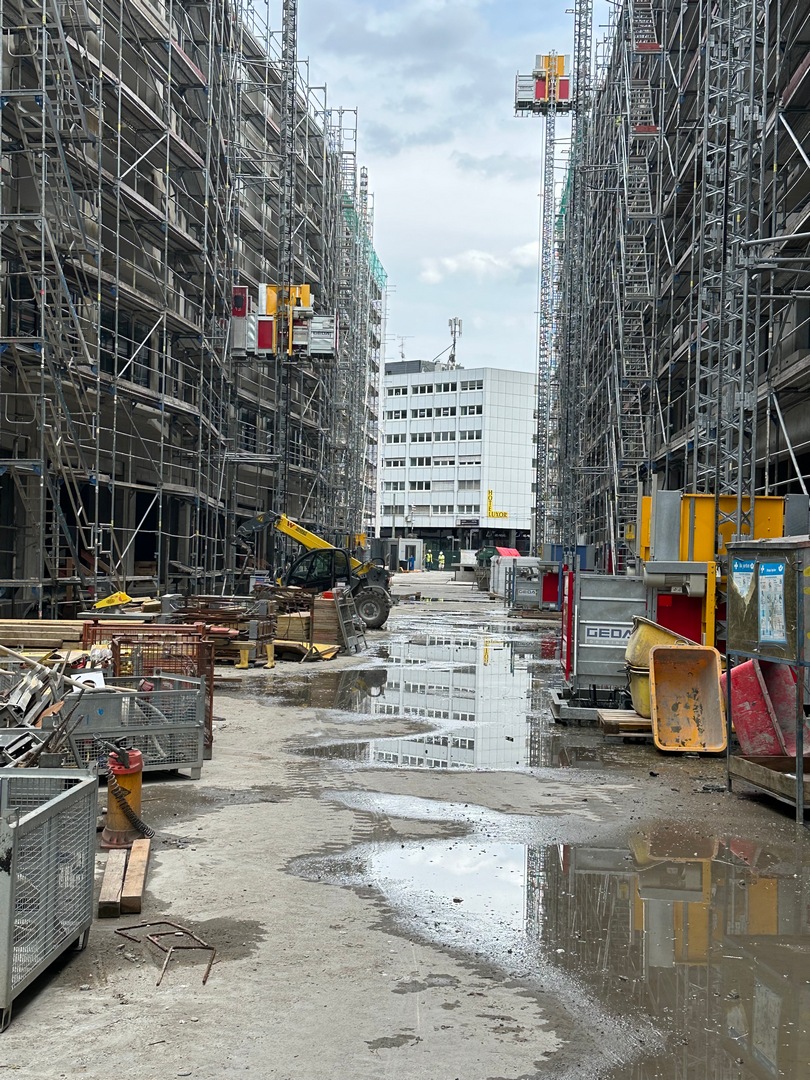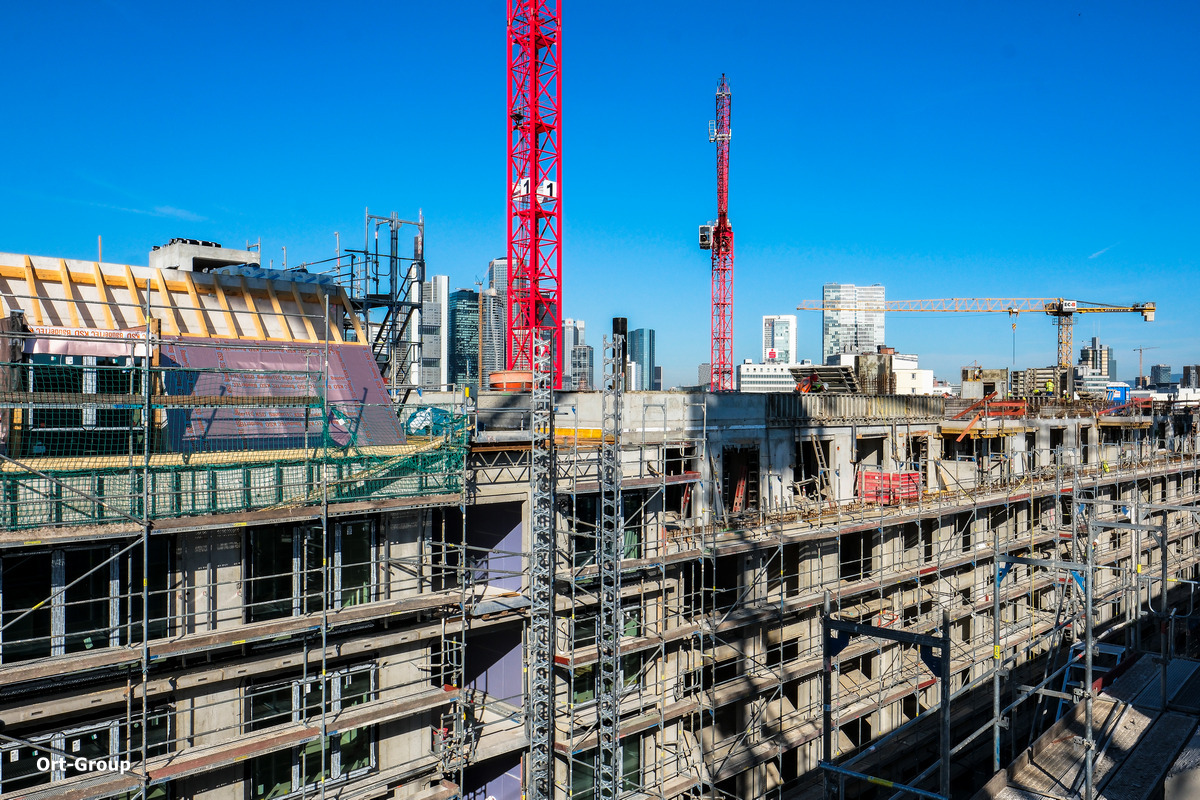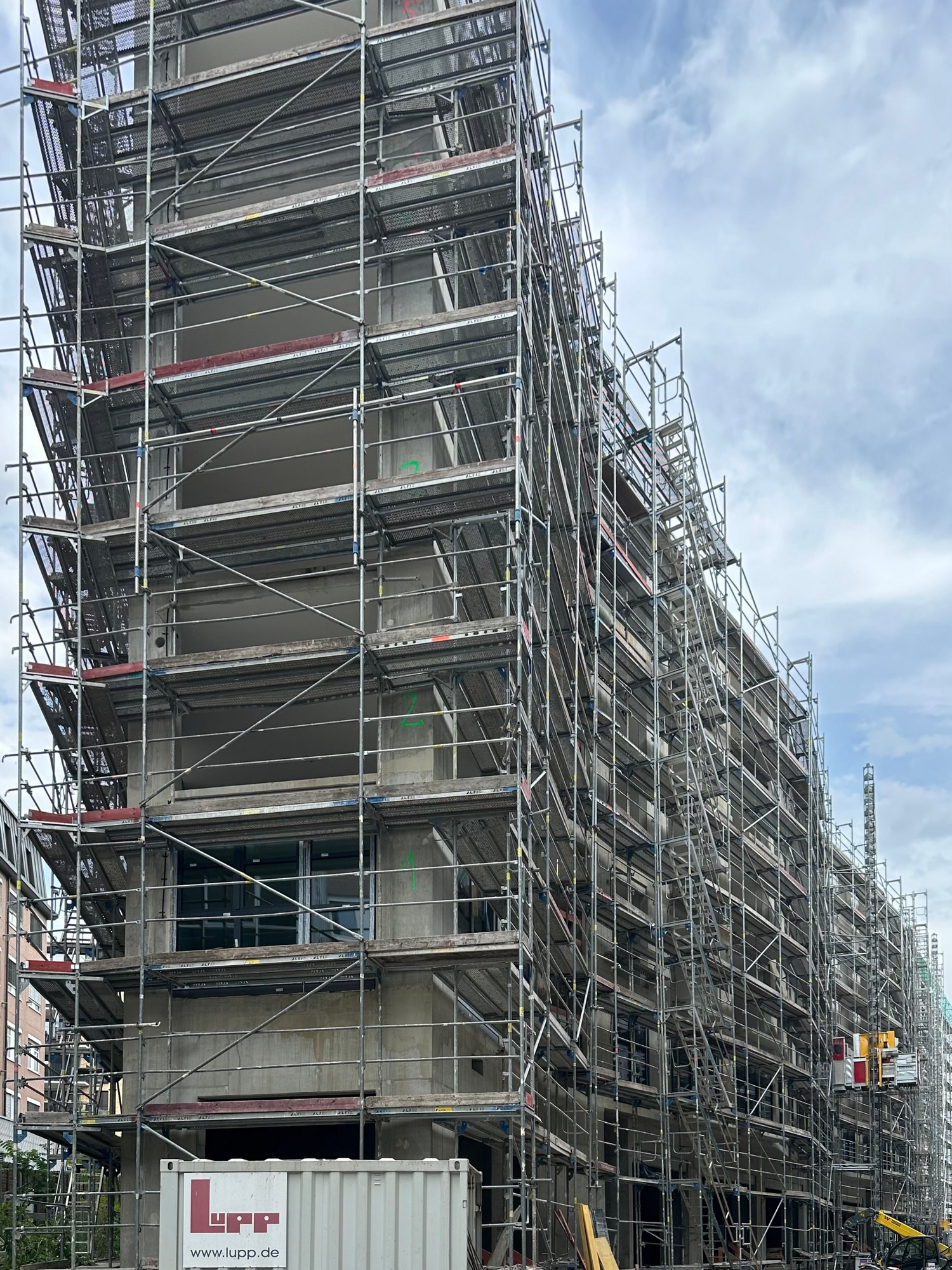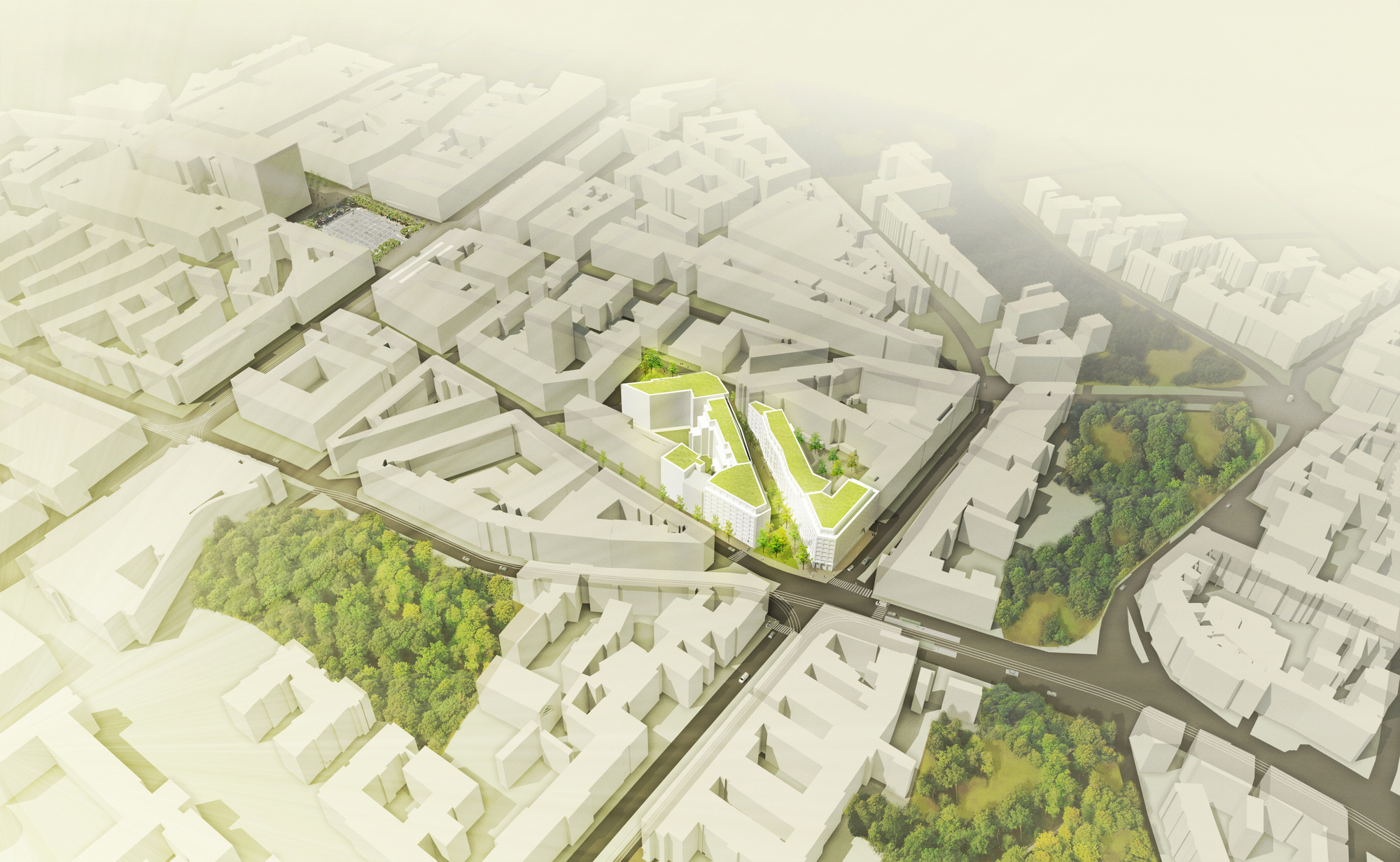
MAIN YARD
The “Green Alley” that transforms a problem area
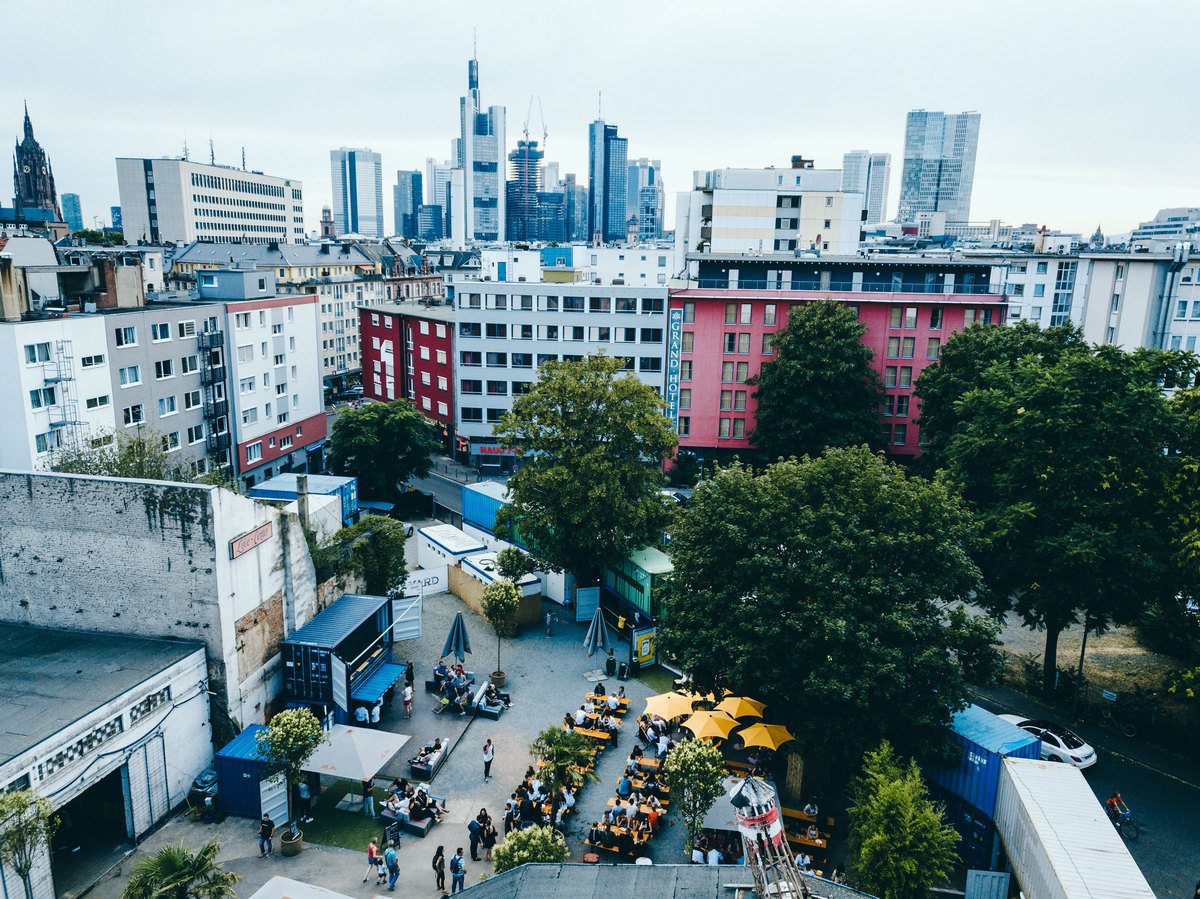
The Allerheiligendistrict is located in the eastern part of Frankfurt am Main. For decades, it has not emerged from its status as a neglected problem neighborhood. It was uncertain how a comprehensive improvement could start here until Frankfurt real estate entrepreneur Hersch Beker offered the city to consolidate private and municipal properties with his holdings in the district into a single area in order to finally give the district a fresh start.
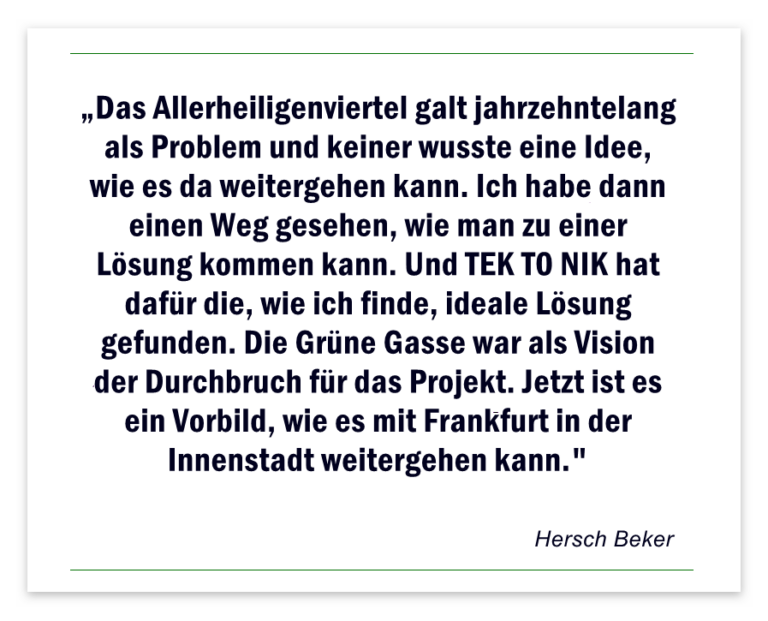
In order to demonstrate the potential of such a solution, TEK TO NIK Architekten has been conducting extensive urban planning studies on behalf of Hersch Beker since 2010, enabling an attractive and economically viable development and use. This was the breakthrough for a shared vision between the city and investors. The core consisted of the construction of a new street leading into the block at a 45° angle from the Lange Straße/Allerheiligenstraße intersection. This will extend Allerheiligentor across Green Alley to form a new neighborhood square that connects Allerheiligentor with the upper Zeil through the passageway in the former city library.
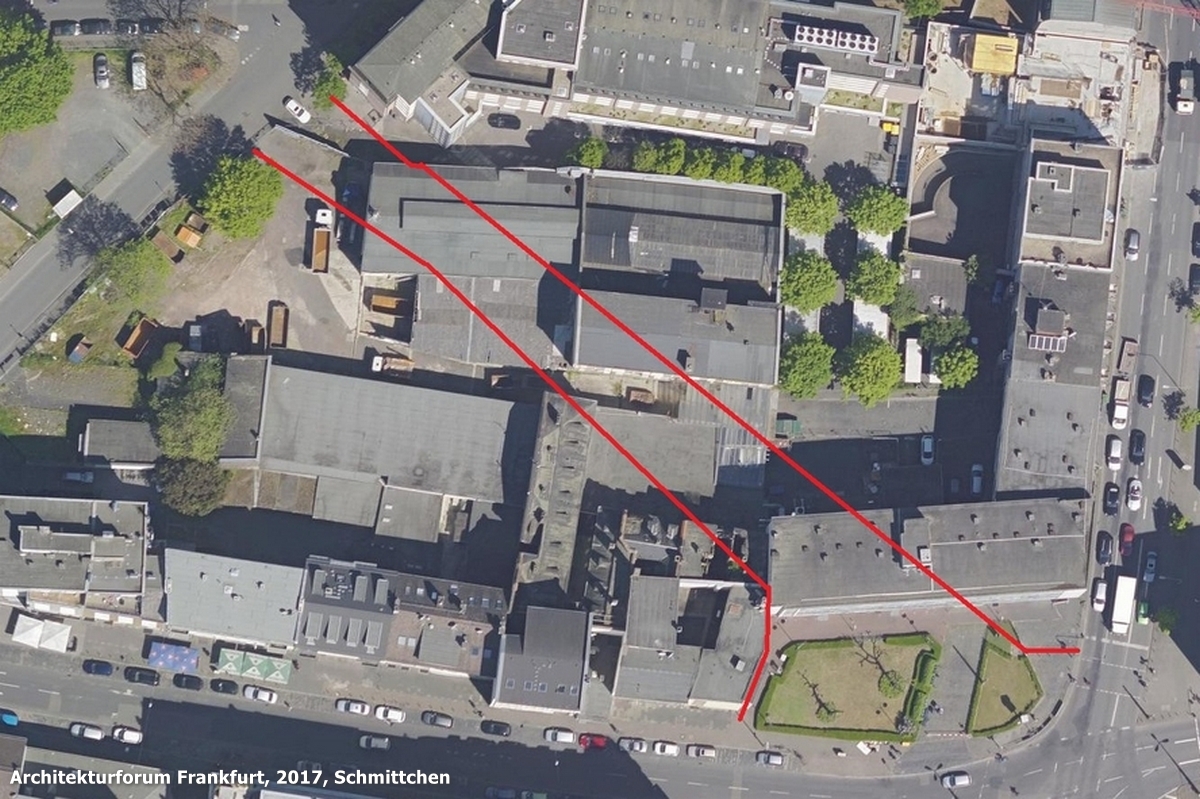
If we think of the urban planning theory of permanence (as described by Aldo Rossi, for example), we see this reprogramming of an urban layout as a development step of historical significance.
The idea not only enabled a series of new buildings to be added to the district, but also provided the opportunity for urban “place making”, i.e. the transformation of the neglected and run-down site into a new place with its own lively and diverse urban character. This is an example of an urban transformation path in which the decisive, positive changes are set in motion through the internal development of core blocks.
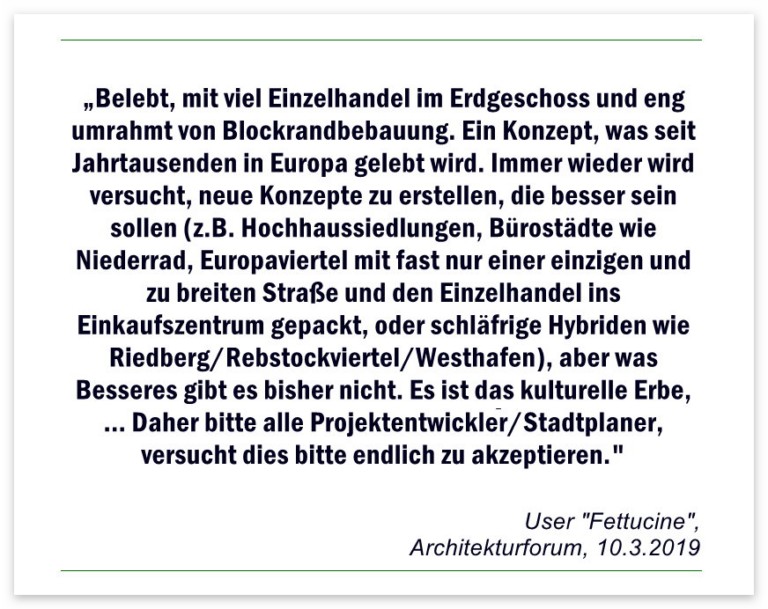
From the outset, our designs aimed to build on classic European, small-scale and self-contained urban architecture. This was recognized early on by the public and decision-makers as the most important characteristic of the transformation (see, for example, the many enthusiastic posts in the Architekturforum/Frankfurt).
This is based on two points. Firstly, a varied, sculptural and in some cases slightly folded façade interplay is planned for buildings along the new street. This will give the street the harmonious character of a classic old building street. Secondly, there will be no car traffic. As has been the case in cities such as Barcelona and Amsterdam for some years now, the street will be quiet, green and lively with restaurants, stores and residents.
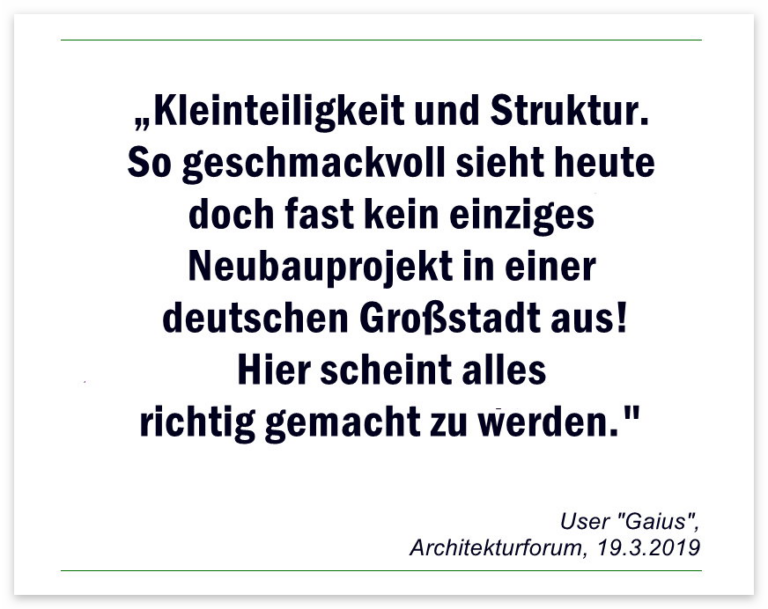
The 140 m long street can also be understood as a constructed manifesto. It presents a plausible example of direction for further street transformations in the cityscape of Frankfurt am Main.
The realisation was taken over by the OrT Group in 2018. Fortunately, the company, which thinks about urban development and sustainability, is using further ideas and ambitious district management to ensure that the project continues to be successful beyond the time of structural completion.
